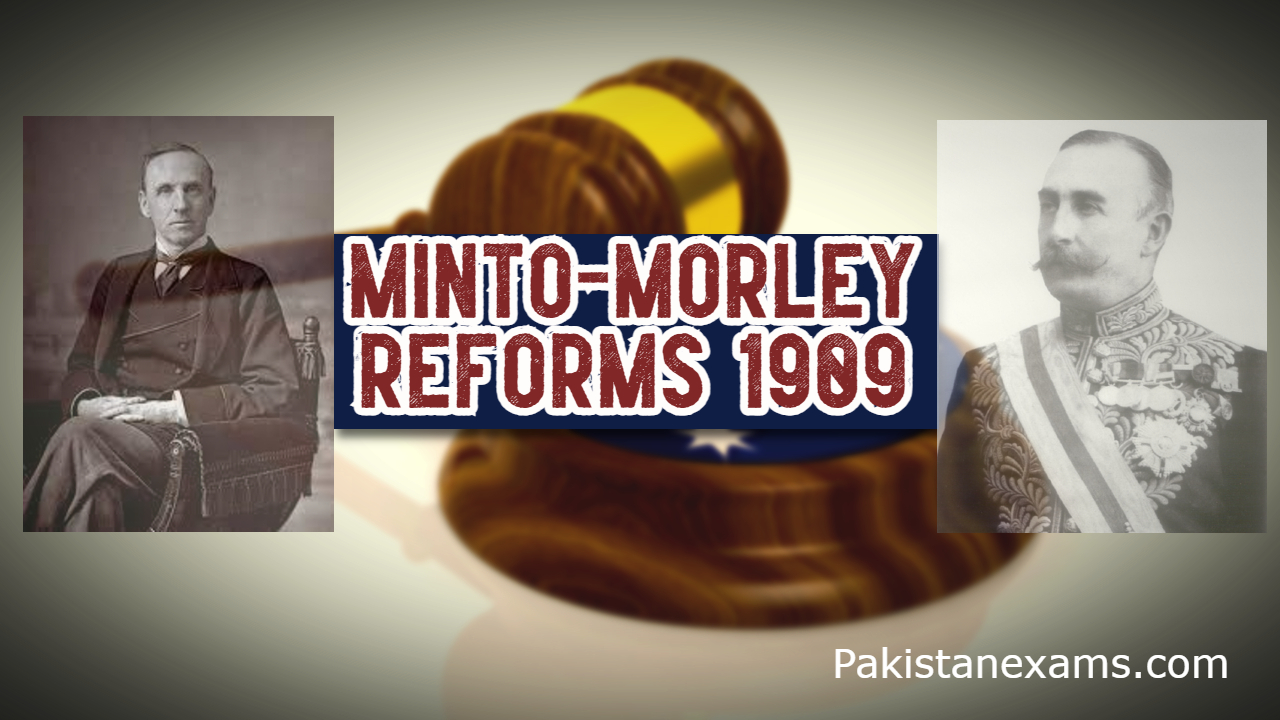Lord Morley was the Secretary of State for the Indian Affairs. In 1906, he announced that reforms were to be introduced in India. Moreover, those reforms will give Indians more powers in legislative affairs. The reforms were approved by Lord Minto (Viceroy of India) and Lord Morley. The British Parliament passed the Minto Morley Reforms in 1909. It is also known as the Indian Council Act 1909.
Salient Features of the Minto Morley Reforms
- The number of members of the Legislative Council at the Center was increased from 16 to 60.
- For the Provincial Legislative Council of Bengal, Madras, and Bombay the number of members was increased to 50, and for other provinces, it was 30.
- Muslims were given a separate electorate.
Note: In Simla Deputation Muslims demanded a separate electorate which was accepted in the Minto-Morley Reforms. - Muslims were also given 1/3rd representation in the center.
- The Members of the Legislative Council could vote, and discuss budgets. They were also permitted to suggest the amendments. It is important to keep in mind that some items were non-vote items.
- For the council of the Secretary of State, two Indians were nominated.
- The Viceroy of India was given the power to nominate one Indian for his Executive Council.
Importance of the Minto Morley Reforms
Consequently, the Indian Council Act 1909, gave the Muslims the right of separate electorates and 1/3rd representation. This showed that Muslims were a separate nation from Hindus in India. Therefore, these reforms were important for the identity of Muslims in India. Moreover, these reforms proved the Two Nation theory in India.
Criticism of Indian Council Act 1909
However, the Hindu leaders criticized the Indian Council Act of 1909. They called it a policy of Divide and Rule because of the acceptance of separate electorate and 1/3rd representation for Muslims. The reason is that Indian National Congress always advocated the idea that in India only one nation lives not two nations.

